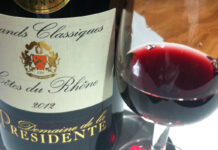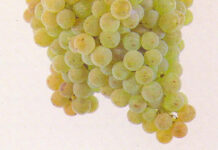Luke Richardson is a sommelier who has worked in a range of venues across the UK in a career spanning more than 20 years. He is now wine buyer/cheese fanatic at IJ Mellis Cheese. In his column for SLTN he shares his thoughts on all things wine-related and answers your questions about wine. If you have a question for Luke email it to sltn@peeblesmedia.com

Hi again all.
This month I thought I would look at German wines. Contrary to popular belief, Germany has a fine array of grape varieties in the ground, and makes a range of wine styles from sparkling whites, through dry and off-dry whites, to light bodied reds and some of the best dessert wines in the world.
I feel that the great British public is somewhat stuck on haunting memories of gloopy sweet hock wines and Riesling blends from the 70’s and 80’s, but I’m happy to say that a lot has changed since then!
Sekt is the go-to sparkling wine, often just off-dry but you can find dry wines as well. They are fairly frivolous in style, but delicious and well made in general – Germany’s answer to the French cremants. Prices start at around £10+vat.
The major white grape continues to be Riesling, but not necessarily of the sweet kind. If you want something bone dry, you should look at the examples from Rheingau or Pfalz – the best indication for level of sweetness without opening a bottle is to check the ABV.
Wines at 12% alcohol will be bone dry, wines at 10.5% will be slightly off dry and wines below that will be increasingly sweet – down to around 8% for the Mosel Saar Ruwer Rieslings.
The major difference between the Riesling of today and yesteryear is that the gloopiness is gone! This is because they used to blend in a workhorse grape variety called Silvaner, but still label the wines as Riesling. Riesling itself has very high natural acidity so even if the wines show some sweetness in the mouth, they will finish with a burst of freshness that cleans off the palate. The drier wines tend to be crisp and lean, with hints of apple and a grassy edge, whilst the sweeter wines (from the Mosel especially) show ripe apple compote and a slatey minerality – all are delicious with seafood or great as aperitifs, or simply as a refreshing glass on its own!
Other than Riesling, there are decent examples of Chardonnay, Pinot Blanc (Weissburgunder), Pinot Gris (Grauburgunder) and Sauvignon Blanc. Most are meticulously made and offer good value for quality.
As far as reds go, there are fewer options. I say that, but actually the one to go for is Spatburgunder or Pinot Noir as we know it. Whilst there are some crisp and linear wines out there, most are pretty generous with the fruit and provide really good value for the money – upwards of £10+vat gets you something decent, with a few around the £8.50 mark if you search hard enough/ bargain well enough! As the prices of Burgundy go stratospheric, lots of Pinotphiles (careful how you say that!) are flocking to buy these German Pinots – Ahr is my favourite area, showing soft voluptuous fruit and a nice texture in the mouth for less than half the cost for a similar burgundian wine.
These wines are really underrepresented in the UK market, but offer really great value for money.
I also hopefully get some bonus points from my lovely German wife Nina!
Until next time, Prost!























